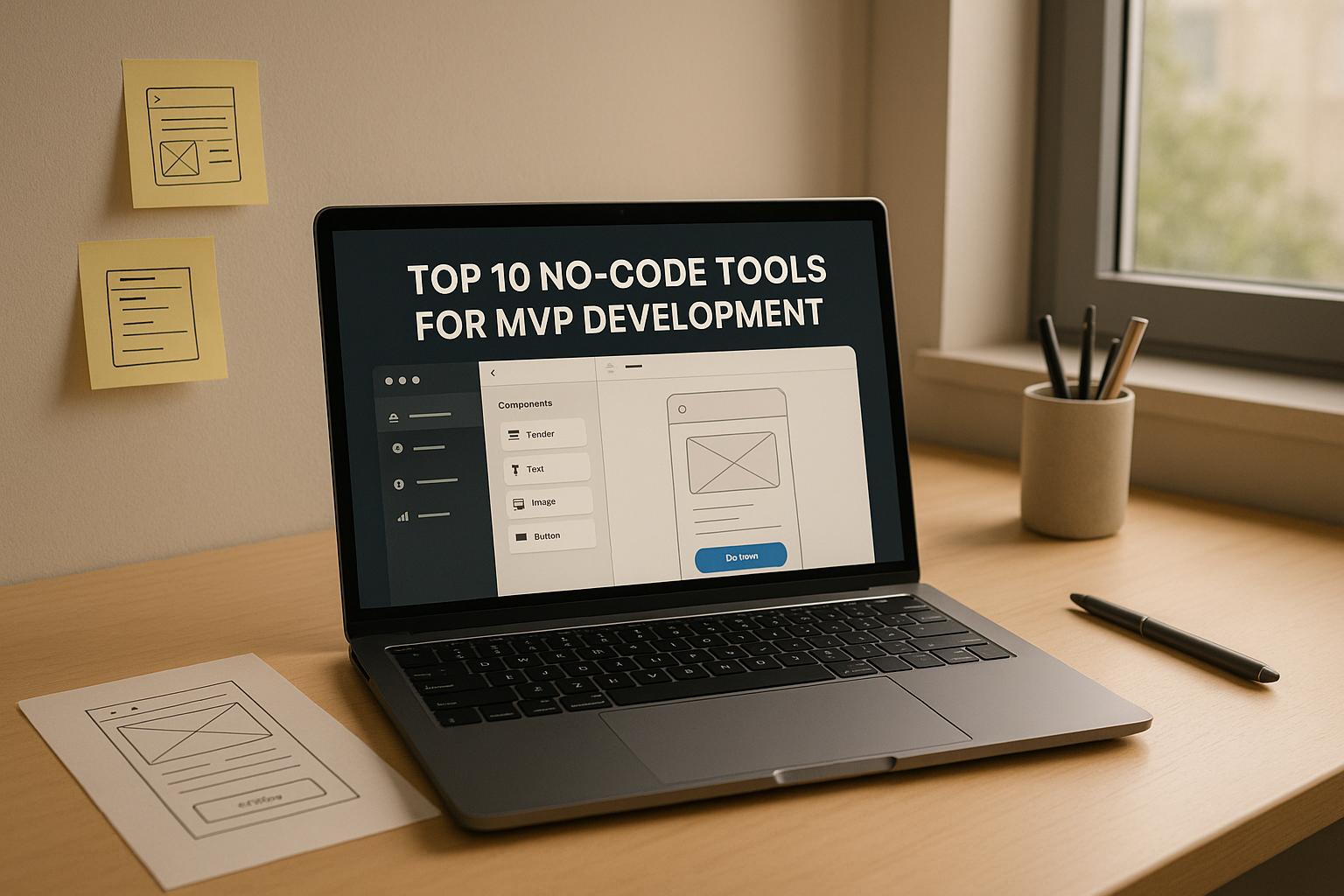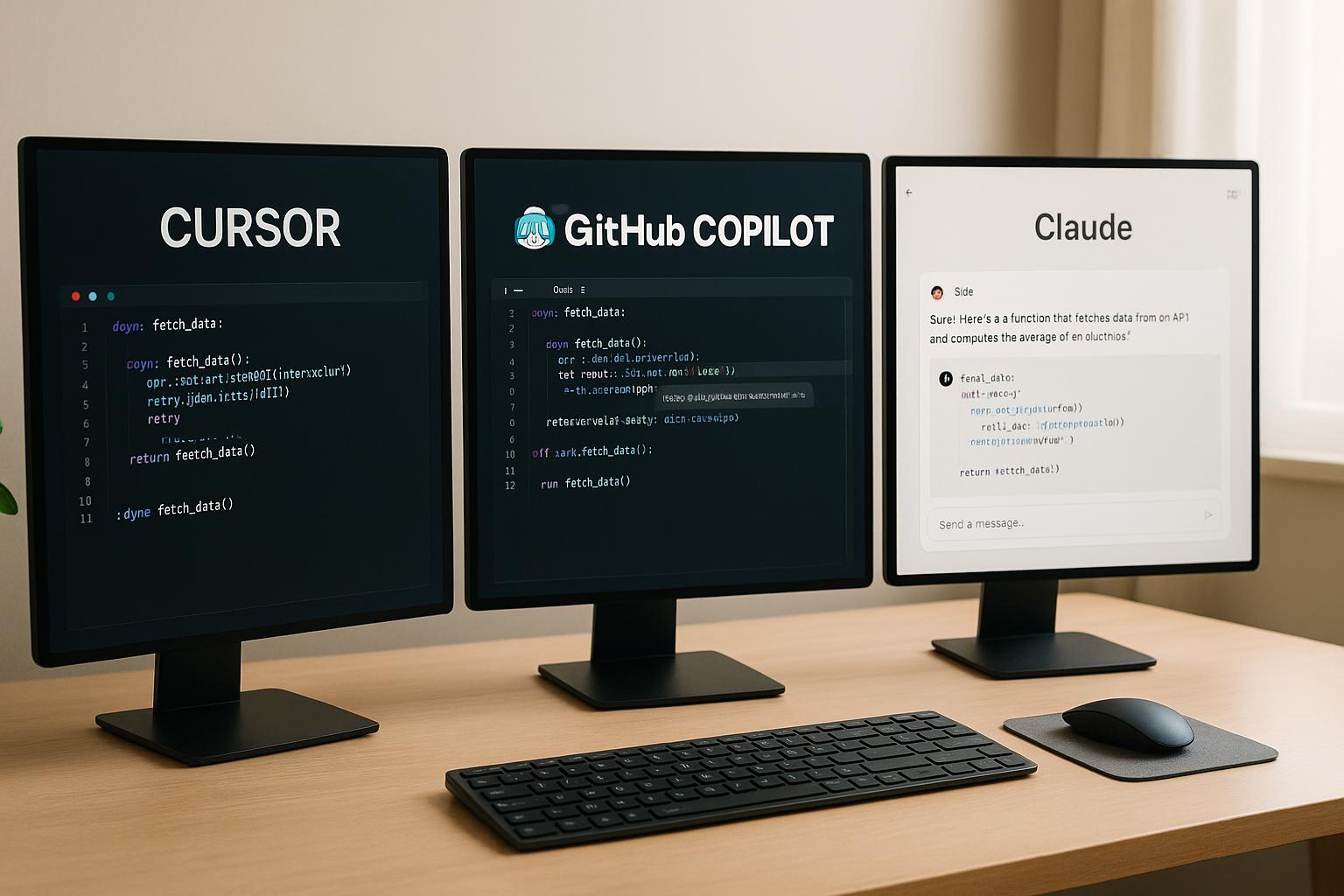When Bubble.io Stops Being Cost-Effective: The $10K/Month Wake-Up Call
Taher Pardawala October 31, 2025
Bubble.io is a great platform for building MVPs quickly and without coding skills, but as your app scales, costs and performance issues can become a problem.
Here’s the key takeaway: Once your operational costs hit $10,000/month, it’s time to rethink whether Bubble.io can still meet your needs. The platform’s pricing, based on workload units (WU), can lead to unexpected expenses as usage grows. Plus, performance bottlenecks and limited customization options often surface at this stage.
What You Need to Know:
- Why Startups Use Bubble.io: Easy MVP development, no coding required, and fast launches.
- The $10K/Month Problem: Costs rise with usage, and performance issues emerge as apps scale.
- Solutions to Scale Beyond Bubble.io: Gradually migrate to scalable tech stacks (e.g., Node.js, Vue.js), optimize system design, and partner with engineering experts for smooth transitions.
If your costs are nearing $10,000/month, start planning a phased migration to more scalable technologies to ensure your growth isn’t held back.
Is Bubble workload a deal breaker? what you need to know before scaling your app
Recognizing the $10K/Month Threshold
Hitting the $10K/month mark with Bubble.io often serves as a moment of reflection for many founders. It’s the point where you need to evaluate whether the platform’s benefits still outweigh its growing costs and potential limitations. As your Bubble.io application grows, factors like operational expenses and performance bottlenecks can start creeping toward that $10,000/month range.
While Bubble.io promotes its scalable, enterprise-level performance, it’s essential to keep a close eye on your app’s usage and performance metrics [1]. As user traffic surges and data demands grow, these metrics will help you determine if the platform can keep up with your business’s evolving needs. Regularly analyzing this data can highlight when it’s time to rethink your approach to scaling. This kind of proactive monitoring is crucial for spotting the signs that your tech stack might need an upgrade to sustain your growth trajectory.
Main Problems with Bubble.io for Growing Startups

As startups approach the $10K/month revenue mark, they often encounter performance hurdles that can’t be ignored. A major factor behind these challenges is Bubble.io’s workload unit system. Let’s unpack how these constraints can directly affect your app’s performance.
Performance Problems: Workload Units and Speed Issues
Bubble.io uses workload units to measure the resources consumed by operations like database searches, API calls, and workflow executions. The issue? As your app grows and user activity spikes, even simple tasks start to eat up more units. This can lead to slower performance during high-traffic periods. For startups scaling to serve thousands of users, these delays can turn once-smooth processes into bottlenecks, ultimately impacting responsiveness and the overall user experience.
sbb-itb-51b9a02
Practical Solutions for Growing Beyond Bubble.io
When your costs approach $10,000 per month and scalability issues start to surface, it’s time to rethink your approach. Instead of scrapping your product entirely, consider a phased evolution. Here are some strategies to help you navigate Bubble.io’s growing limitations.
Moving to a Scalable Tech Stack
Start by identifying which parts of your system are struggling under increased demand. Gradually reimplement those components using more scalable technologies like Node.js, Vue.js, or GoLang. A phased migration can help minimize downtime while allowing you to make key improvements. For example, you can optimize database queries, introduce efficient caching methods, and integrate enterprise-grade services. Plus, by choosing a tech stack that supports advanced features – like AI capabilities – you’ll be setting yourself up for long-term success.
Improving System Design and Performance
Reworking your application’s design can significantly boost efficiency and reduce costs. With expenses nearing $10K per month, every optimization counts. For instance:
- Use dedicated databases like PostgreSQL or MongoDB for custom indexing and faster queries.
- Implement modern caching tools like Redis or Memcached to store frequently accessed data in memory, reducing load times.
- Transition from a monolithic structure to an API-driven design based on microservices. This ensures resources are used more effectively, simplifies maintenance, and makes scaling easier.
Incorporating solid DevOps practices is also crucial. Automated deployment pipelines, robust monitoring systems, and load balancing can help your application stay reliable, even during periods of heavy traffic.
Working with Engineering Partners for Modernization
If your team lacks the resources to handle a platform migration while maintaining day-to-day operations, partnering with experienced engineers can make all the difference. A trusted engineering partner can provide the coding expertise and structured migration framework needed for a smooth transition.
For example, AlterSquare offers a 90-day transformation program designed to move systems in phases while keeping core functionality intact. This minimizes disruptions, prevents feature drift, and ensures your team stays focused on key improvements. These partners often bring specialized skills in modern development, such as AI-powered solutions, mobile optimization, and secure integrations with enterprise tools, which can be game-changing during the transition.
Strong partnerships also emphasize training and support. External experts can handle the heavy lifting while teaching your team modern development practices. Post-launch, they can assist with ongoing performance monitoring, security updates, and feature development – ensuring your new tech stack evolves alongside your business. This approach helps you sidestep common challenges and keeps your platform ready for future growth.
Making the Switch: Reducing Disruption and Keeping Progress
Switching from Bubble.io doesn’t mean starting over from scratch. With a well-thought-out plan, you can transition to a more scalable tech stack while keeping your product operational and your users satisfied. The secret lies in breaking the process into manageable steps that minimize risks and maintain progress. This phased approach allows you to build on your existing work while overcoming Bubble.io’s limitations.
Discovery, Planning, and Preparation
When you’re approaching the $10K/month mark, a smooth transition is crucial to keep your growth on track. Before diving into development, take the time to evaluate your current system and define your migration goals. This initial planning phase is critical to avoid costly mistakes and ensure alignment across your team. It also ties back to the need to address rising costs and performance issues.
Start by conducting a thorough audit of your Bubble.io application. Identify key features, integrations, workflows, data structures, API connections, and services. This detailed inventory will serve as your migration checklist and help ensure no critical functionality is overlooked.
Next, outline the technical requirements for your new platform. Think about factors like expected user growth, performance targets, security needs, and integration capabilities. If you’re spending $10,000 per month, your system likely needs to handle far more traffic and data than when you started. Plan for where your business will be in the next 12-18 months, not just where it is today.
Bring your stakeholders – your team, investors, and key customers – into the conversation. Establish clear timelines and set realistic expectations for the migration. Depending on the complexity of your application, the process can take anywhere from 3 to 6 months.
Create a migration roadmap that prioritizes essential features. Identify which components can be rebuilt quickly and which will require more time and effort. This roadmap will guide your timeline and resource allocation throughout the process.
Development and Launch Preparation
Once your roadmap is in place, shift your focus to development and testing. To avoid disrupting your existing operations, build the new system in parallel with your current Bubble.io platform.
Use agile sprints to develop and test individual components. This approach allows you to catch issues early and make sure the new system meets your original specifications and user expectations.
Set up a staging environment that mirrors your production system to test features thoroughly. Pay special attention to data migration, ensuring that critical information like user accounts and transaction histories transfers accurately.
Involve your users early by running a beta program with a small group of trusted participants. Their feedback can uncover usability issues or missing features that internal testing might miss.
Prepare for launch day by establishing rollback procedures. If something goes wrong, having a clear plan to revert to the Bubble.io system can ease the stress and give your team the confidence to move forward.
Post-Launch Support and Ongoing Improvements
After launch, keep a close eye on system performance. Use monitoring tools to track response times, error rates, and user behavior. Compare these metrics to your Bubble.io baseline to confirm the new system is delivering the improvements you aimed for. If any features underperform, prioritize fixing them.
User support is especially critical in the weeks following the migration. Users may need help navigating the new interface or adapting to changes in workflows. Providing dedicated support during this period can prevent minor issues from escalating into major frustrations.
Leverage real-world usage data to refine the system further. This is your chance to enhance performance, introduce new features, or improve user experiences that weren’t possible before.
AlterSquare’s post-launch services can be invaluable during this phase. Their team offers ongoing support by monitoring performance, implementing security updates, and developing new features. This allows your internal team to focus on growing the business while ensuring your tech stack evolves with your needs.
Migration isn’t about starting over – it’s about evolving. With careful planning, phased development, and continuous support, you can move past Bubble.io’s limitations without losing the momentum that brought you to the $10,000 per month milestone.
Conclusion: Knowing When and How to Move Beyond Bubble.io
Hitting the $10,000/month mark is a clear signal that your startup has outgrown its initial foundation. When workload unit (WU) consumption pushes your bills past this level – paired with performance slowdowns and integration challenges – it’s time to acknowledge that Bubble.io has fulfilled its role as an MVP platform but may no longer support your growing needs.
These signs call for proactive action. Monitoring WU consumption and response times early on gives you a crucial advantage, allowing you to plan your next steps before costs spiral. The most forward-thinking founders don’t wait until expenses skyrocket – they start preparing their migration strategy as soon as they approach the $10,000 threshold.
Issues like sluggish page loads, limited customization options, or frequent purchases of WU add-ons (priced at $0.30 per 1,000 units[2]) are strong indicators that Bubble.io might no longer match your ambitions.
A phased migration strategy is key to building on your current achievements while addressing Bubble.io’s limitations. Think of this transition as a natural progression rather than a disruptive overhaul.
Once you have a clear migration plan, the next step is assembling the right technical expertise. Collaborating with experienced engineers – like those at AlterSquare – can provide the frameworks and tools needed to maintain momentum while scaling for performance, customization, and long-term growth.
Instead of viewing platform limitations as setbacks, see them as opportunities to evolve. Startups that succeed beyond the $10,000/month milestone understand that the rapid development capabilities that made Bubble.io ideal for MVPs can become bottlenecks as user demands and workflows grow more complex.
Your journey from MVP to a scalable product is a testament to your success. Recognizing the right moment to upgrade your tech stack – and working with experts who understand your challenges and goals – ensures you can scale seamlessly and continue your growth trajectory.
FAQs
How can I tell if my Bubble.io app is nearing the $10,000/month cost threshold?
If your Bubble.io app is nearing $10,000 per month in operational costs, there are a few key indicators to keep an eye on. One major sign is performance issues – things like slower load times or reduced responsiveness might mean your app is pushing its technical boundaries. Another red flag is rising infrastructure costs, often driven by increased user activity or heavy data usage. And if you’re frequently relying on workarounds or external integrations to add custom features, it could be a signal to reevaluate your setup.
Keeping tabs on growth metrics like user traffic, database size, and API usage is crucial for spotting when costs might spike. By regularly reviewing both your budget and performance metrics, you can stay ahead and ensure you’re ready to scale when the time comes.
How can I smoothly transition from Bubble.io to a scalable tech stack without disrupting my current operations?
Migrating from Bubble.io to a more scalable tech stack requires careful planning to avoid risks and maintain smooth operations. Start by pinpointing the challenges you’re encountering with Bubble.io – whether it’s performance issues, rising costs, or other constraints. Once you’ve identified these, decide which parts of your application should be migrated first. Typically, this includes features that are either resource-heavy or critical to your business.
As you begin the migration process, work on building your new tech stack alongside your existing Bubble.io setup. This parallel approach allows you to test and refine the new system without disrupting your current operations. Gradually transfer functionalities to the new platform, thoroughly testing each step to ensure everything runs smoothly. Throughout this process, keep your team and users informed. Clear communication is key to managing expectations and ensuring a seamless transition.
By following a step-by-step strategy, you can keep your product stable while setting it up for future growth.
How can engineering partners like AlterSquare help startups move beyond Bubble.io when scaling becomes a challenge?
Engineering partners such as AlterSquare are essential for startups looking to move from Bubble.io to a platform that can handle greater demands and provide stronger performance. They evaluate your existing setup, pinpoint areas where performance may be lagging, and suggest solutions tailored to fit your specific business objectives.
With their technical know-how, AlterSquare can navigate the migration process smoothly, reducing any potential disruptions to your product or daily operations. Whether it’s custom development or adding advanced functionalities, they help lay the groundwork for sustainable growth and scalability.








Leave a Reply